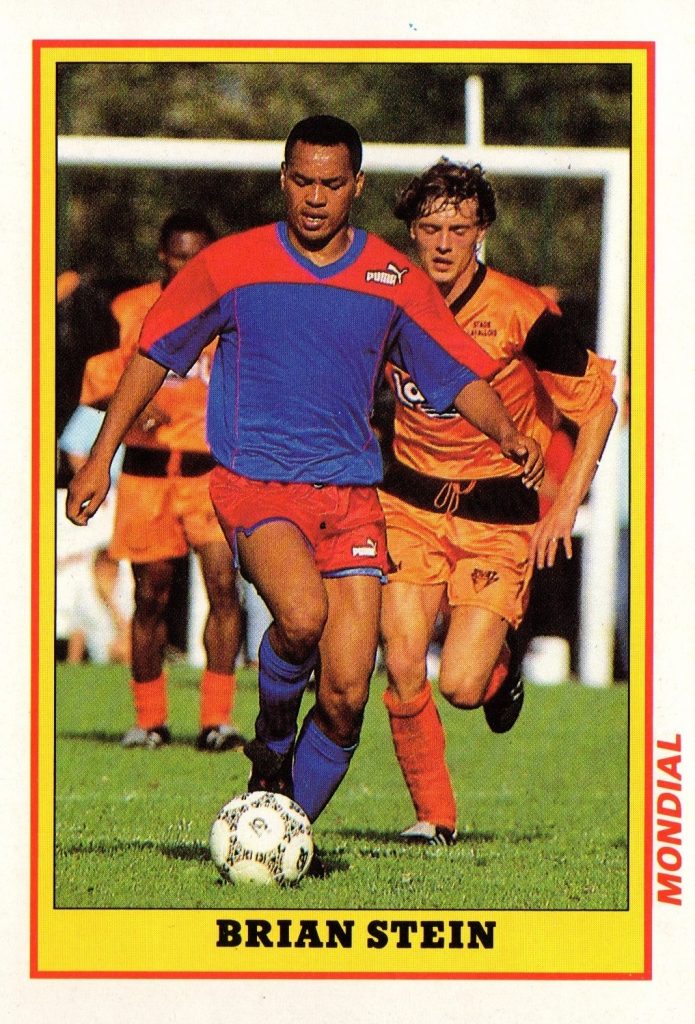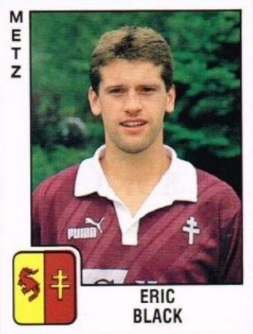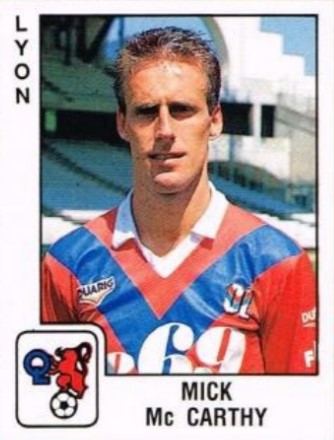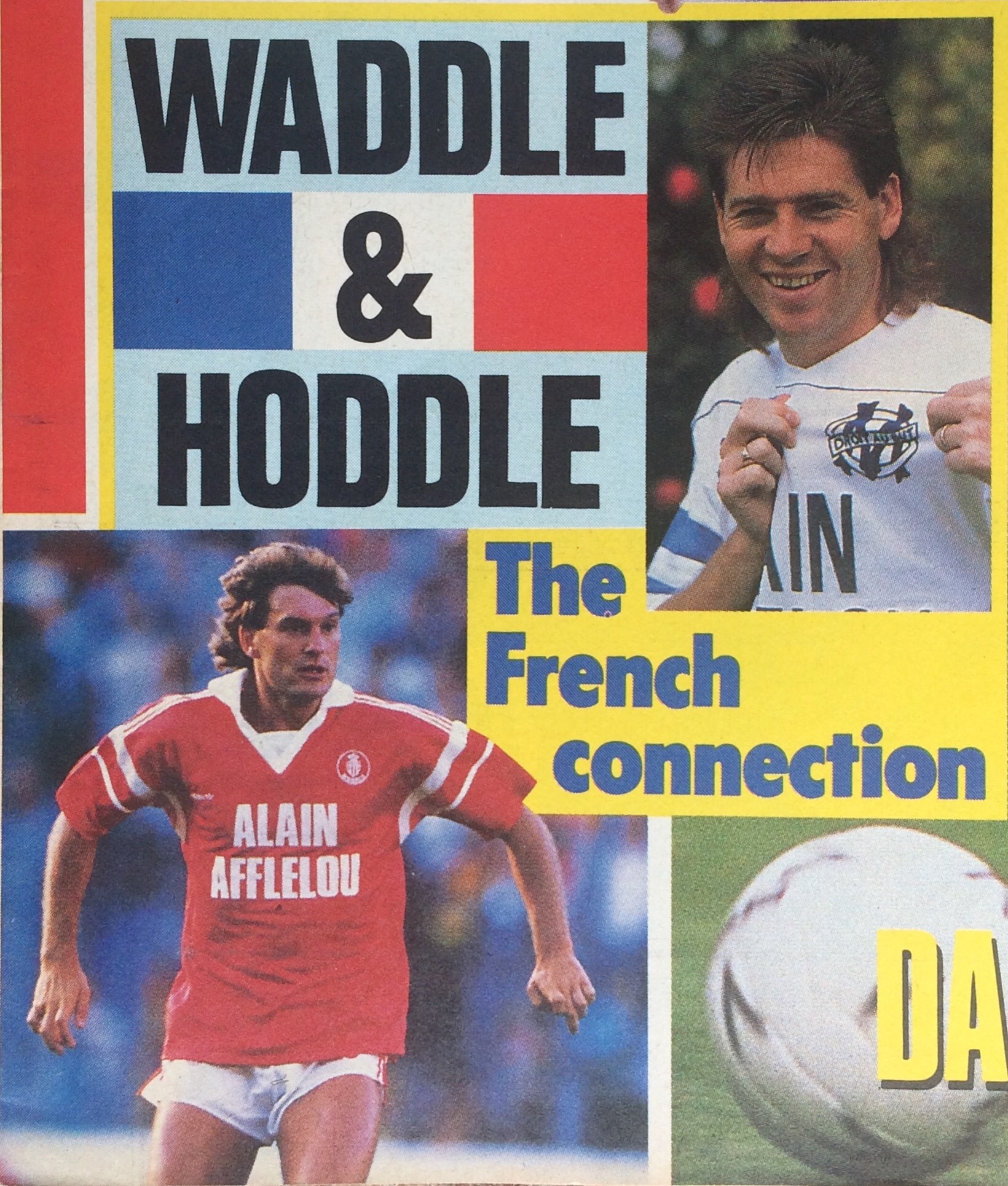France in the 1980s: The British Abroad
The 1980s saw a number of high-profile transfers of players from the Football League to the wealthier Italian and Spanish sides, a trend which gathered pace when English clubs were banned from European competition after the Heysel Stadium tragedy of 1985. Among these were Liam Brady, Joe Jordan, Trevor Francis, Graeme Souness, Ray Wilkins, Steve Archibald, Gary Lineker, Mark Hughes, and Ian Rush. Alongside this, there was a significant exodus of British players to French football during the decade.
Though France won the European Championship of 1984 on home soil, and reached the World Cup semi-finals in 1982 and 1986, the national league was not regarded as one of Europe’s richest, or strongest – no French side reached the final of any European club competition in the 1980s. While France’s best player, Michel Platini, was in Italy with Juventus from 1982 to 1987, there were only a small number of notable imports in the country. Toward the end of the decade, that changed with the arrival of international stars such as Klaus Allofs, Jorge Burruchaga, Enzo Francescoli, Pierre Littbarski, and Carlos Valderrama.

Below: 50 Top Players in France (Mondial magazine, summer 1987)

Before the 80s, there had been little significant movement of players across the Channel. There was then almost no historical precedent for French players moving to the Football League; Eugène Langenove had been the very first, at Walsall in 1922. When Didier Six had a brief spell at Aston Villa in 1984-85, he was the first Frenchman to play in English football since Josef Praski for Notts County in 1949 – Eric Cantona was the next to join a top-flight club, in 1992. The heyday of British influence in French football was even more distant, back in the 1930s. In the early years of the first professional league in the country, clubs such as Fives, Red Star, Club Français, Excelsior and RC Roubaix, Sète, Sochaux and Valenciennes employed a number of English and Scottish players, and managers too.
A Scot, Peter Farmer, took Marseille to their first trophy, the Coupe de France in 1924. Beaten finalists Sète were managed by another Brit, Victor Gibson, who had brought in a group of English players and coached for over 20 years in France. When they lifted the trophy in 1930, Englishman Sydney Regan was in charge. Among the Sète team of 1924 was Arthur Parkes, later a Coupe de France winner in 1931 for Club Français. Willie Aitken, previously at Juventus, was part of Cannes’ cup-winning side the following year, and became their player-manager. Among 44 British players to appear in France’s first professional league season, 1932-33, were Scottish internationals Alex Cheyne and Andy Wilson at Nîmes. Another Scot, Peter Dougall, left Southampton for Sète, joining Arsenal on his return to England. Jimmy Hogan, a famous manager throughout Europe, was in charge at Racing Club Paris; his successor, George ‘Sid’ Kimpton, led them to their first title in 1936, when they also completed the double. George Berry ended his playing career with Fives in the 30s, before replicating Kimpton’s feat by managing Lille to the double in 1945-46.


Below: Ian Wallace arrives at Brest, 1984


A second major influx began in the mid-80s with former million-pound striker Ian Wallace joining Brest from Nottingham Forest in 1984, when Laurie Cunningham also arrived at Marseille, having spent several years at Real Madrid. As the full effects of English isolation from European competition were felt, they were later followed by many other players. From the Football League and Scottish league Eric Black, Ricky Hill, David Hodgson, Mo Johnston, Mick McCarthy and Simon Stainrod all played in France during the late 1980s. From the Republic of Ireland, Noel King and Jacko McDonagh moved to France in the mid-1980s, and Northern Irishman George O’Boyle was signed by Bordeaux in 1987. In the summer of 1988 alone, Clive Allen, John Byrne, Lee Chapman, Graham Rix, Frank Stapleton and Brian Stein arrived.
Although several of these players were internationals, few came from top-of-the-table clubs. The transfer of Dundee striker Ray Stephen to Nancy in 1986 was an example of the kind of under-the-radar signings made by French clubs at this time; spotted by a young Arsène Wenger, Stephen stayed in France for five years.






Arguably the three highest-profile British arrivals in the French First Division were Mark Hateley, Glenn Hoddle and Ray Wilkins, all members of England’s 1986 World Cup squad. Hateley and Wilkins had both been signed by AC Milan from English clubs in 1984. After three years in Italy, Wilkins played briefly at Paris Saint Germain, while in the summer of 1987 Hoddle joined Hateley at Monaco, where both stayed for three seasons. One of the most talented players of his generation, Hoddle had spent his entire career to date at Tottenham, but was never fully trusted by successive England managers. By his own admission the move to France at 29 re-invigorated him, and he flourished under manager Wenger, himself beginning a seven-year stint at the club. Monaco won the 1987-88 French title, with Hateley’s 14 goals making him their top scorer; in the following season they finished third, as Hoddle scored a career-high 18 league goals.
Another signing from Tottenham, Chris Waddle, enjoyed even greater success at Marseille after they paid a British record £4.25 million fee for him in July 1989. Waddle played some of the best football of his career in France, where he helped Marseille to win successive French titles between 1990 and 1992, and reach the European Cup Final of 1991 (where they lost to Red Star Belgrade on penalties). Waddle also found time to renew the musical career he had begun with Hoddle on 1987’s ‘Diamond Lights’, venturing into Europop to record ‘We’ve got a feeling’ with his team-mate, French international Basile Boli. Marseille then signed England international Trevor Steven for another record fee of £5.5 million in August 1991 (jointly-held with David Platt, who moved from Aston Villa to Bari in the same summer) but he only stayed for a single season as the club’s problems mounted under club president Bernard Tapie. Waddle also left at the end of the 1991-92 season, returning to England with Sheffield Wednesday. Though Marseille won the first Champions League Final in 1993, they were stripped of their French title due to match-fixing and financial irregularities, with Tapie later convicted for complicity in corruption and witness tampering.



A host of French internationals have graced the Premier League, led by Eric Cantona and followed by Fabien Barthez, Marcel Desailly, Didier Deschamps, David Ginola, Christian Karembeu, Frank Leboeuf and Mikaël Silvestre. Wenger paved the way for French managers in England when he was appointed at Arsenal in 1996 for what turned out to be a 22-year stay; he brought Nicolas Anelka, Thierry Henry, Emmanuel Petit, Robert Pires, Patrick Vieira and Sylvain Wiltord to Highbury. A fairly steady stream of British players, if not managers, continued to move in the opposite direction, especially post-Bosman, largely from the lower divisions in England or the Scottish league. These included Jamie Fullarton, Phil Gray, Allan Johnston, Chris Kiwomya, Chris Makin and Gary Smith; among the more successful players in France during the 90s were Tony Cascarino, John Collins, and Michael Hughes. The trend seems to have slowed since Joey Barton (Marseille), David Beckham (PSG) and Joe Cole (Lille) had short spells in Ligue 1 between 2011 and 2013.






With thanks to Shahan Petrossian at Soccer Nostalgia for supplying helpful information and images for this article.
The export of British players is one of the topics in my book Before the Premier League: A History of the Football League’s Last Decades.